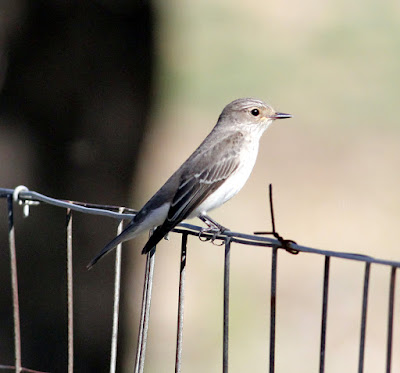The objective this morning was a catch of migrant thrushes, hopefully a good few Redwings plus a few of their close relatives Blackbird and Song Thrush. While we all know that Redwings are the main October movers their huge arrivals and those of Fieldfares often disguise the fact that northern Blackbirds and Song Thrushes arrive at similar times.
I met Andy at 0645 and in the dark we set a couple of nets and waited for the thrushes to arrive. By 1145 our catch of 37 birds comprised of more than 50% members of the thrush family.
Our totals: 17 Redwing, 2 Song Thrush, 1 Blackbird, 4 Coal Tit, 4 Blue Tit, 2 Lesser Redpoll, 2 Goldcrest, 2 Wren, 1 Goldfinch, 1 Sparrowhawk , 1 Treecreeper.
Redwing
Redwing
Both Redwings and Fieldfares were much in evidence this morning. Flocks of each began to arrive from the north, north-east and north-west soon after dawn. Although mostly busy with ringing our watch gave approximate counts of 500 Redwings and 650 Fieldfares. We didn’t manage to trap any Fieldfares even though flocks of many dozens landed briefly on site to take advantage of the rowan and hawthorn berries. We were however more than happy to catch and examine 17 Redwings, only one of which was an adult.
A first year bird shows notches of cream tips to the tertial feathers, an adult does not.
Redwing - first year
Song Thrush
Blackbird
Fieldfare
To catch a Sparrowhawk was not totally unexpected, perhaps overdue being the first one caught here since commencing ringing here almost 12 months ago. It’s not the Sparrowhawk’s bill that ringers have to be careful to avoid but the talons. And in this case there is less to fear from the talons of a juvenile male than the larger and more aggressive female of the species.
Sparrowhawk
Sparrowhawk
Sparrowhawk
In the week I noted that an observer of migration in the Pennines asked “Where are all the Chaffinches”. You may well ask Bryan because the species movement this morning was all but non-existent with not a single Chaffinch caught - most unusual at this time of year when huge numbers of British Chaffinches head south and west. Maybe it has more than a little to do with the poor breeding season?
Our finch quota today was well below par with just two Lesser Redpoll and a single Goldfinch.
Lesser Redpoll




























































































